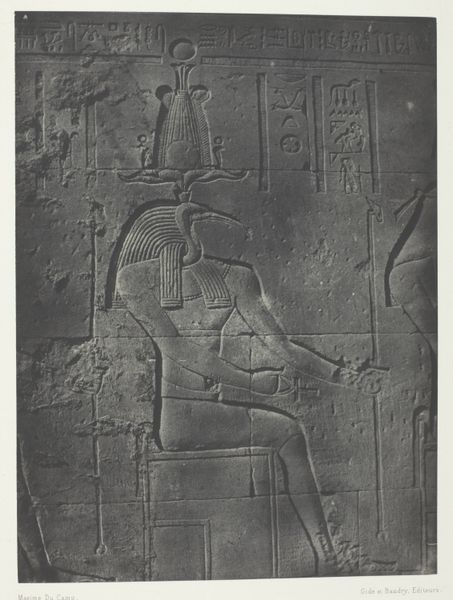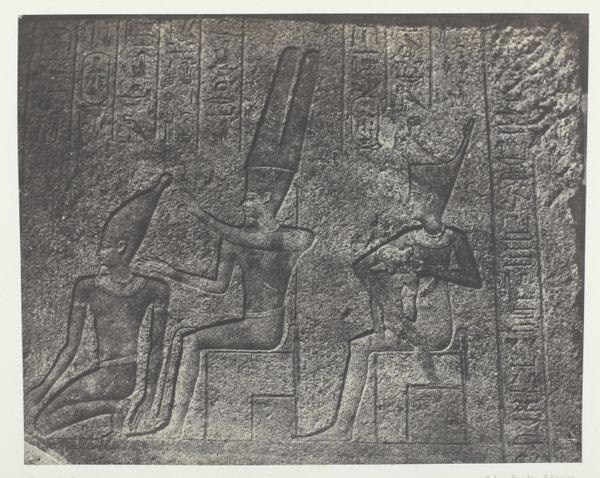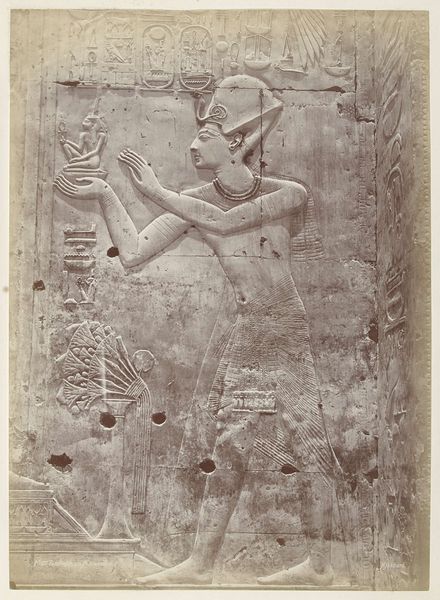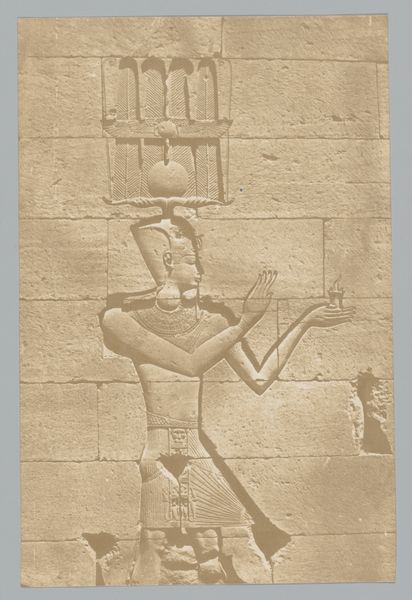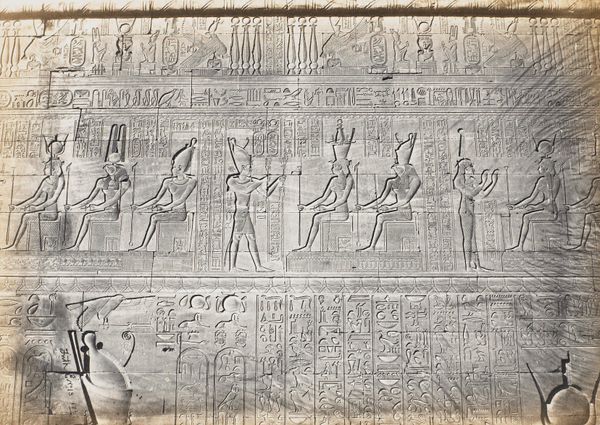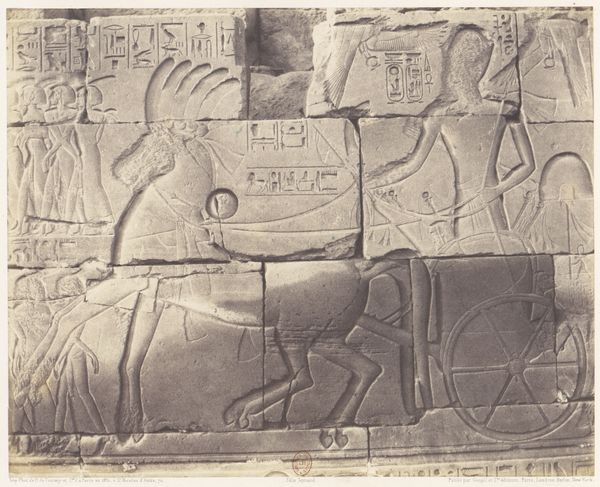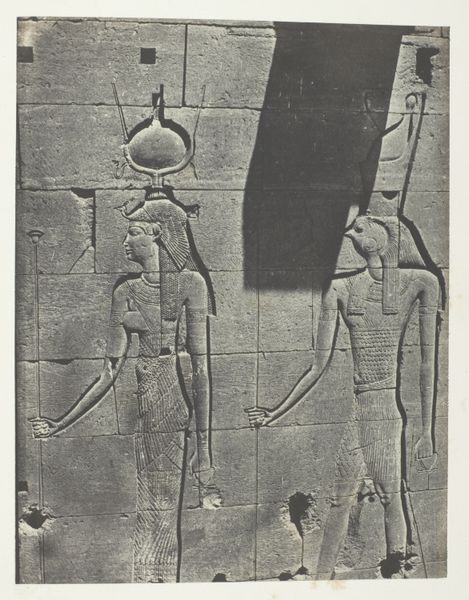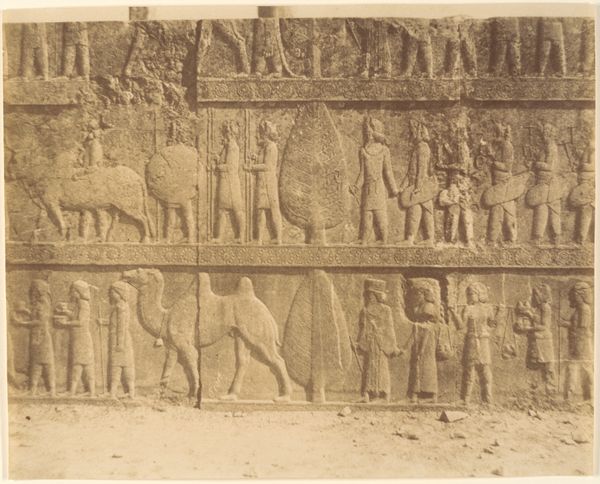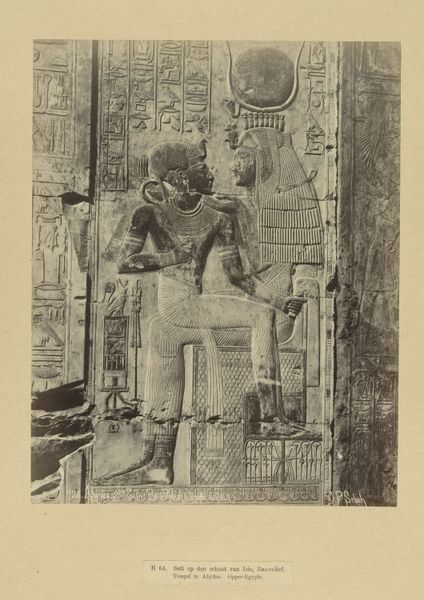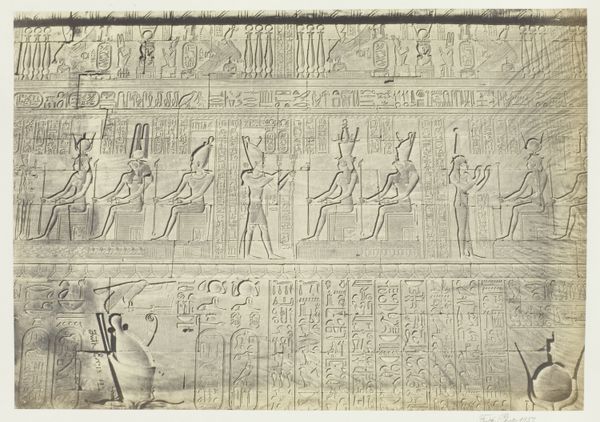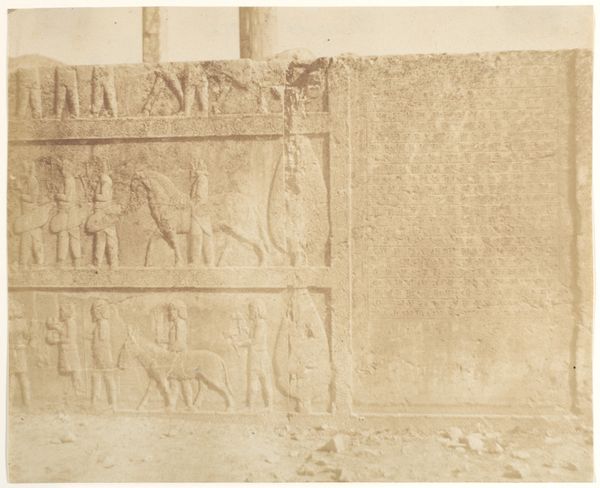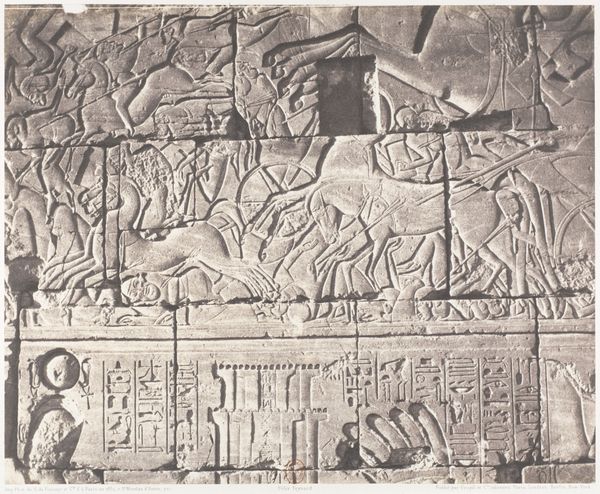
Dendérah (Tentyris), Temple d'Athôr - Face Postérieure - Cléopatre et Cæsarion 1851 - 1852
0:00
0:00
relief, photography, gelatin-silver-print
#
portrait
#
photo of handprinted image
#
relief
#
landscape
#
ancient-egyptian-art
#
photography
#
carved into stone
#
ancient-mediterranean
#
gelatin-silver-print
#
history-painting
Dimensions: 30.0 x 25.4 cm. (11 13/16 x 10 in.)
Copyright: Public Domain
Curator: Looking at this, my initial impression is one of profound stillness and monumentality. The scale seems immense. Editor: Indeed. This is a photograph taken by Félix Teynard between 1851 and 1852, capturing a relief at the Temple of Hathor in Dendera. The full title is "Dendérah (Tentyris), Temple d'Athôr - Face Postérieure - Cléopatre et Césarion." Teynard meticulously documented Egyptian monuments, but there's more here than just documentary interest. Curator: Absolutely. Note how the composition guides the eye. The figures of Cleopatra and Caesarion, rendered in the traditional Egyptian style, are framed by the dense, geometric patterns of the hieroglyphs. The artist really is drawing connections to the aesthetic traditions that he's working in. Editor: And that raises the question of labor. Consider the sheer effort involved in carving these reliefs into the stone, and the societal structures that enabled such projects. It’s also worth noting the shift from that ancient labor to Teynard's photographic process—a comparatively modern technique. It's also important to remember that it's a gelatin-silver print of this work, which tells a history of its own about industrial means of production. Curator: Good points. Formally speaking, the textures are very interesting here as well, right? There is a strong textural presence throughout. Teynard has captured every single crevice. We feel the age of the carving, of this site. Editor: Precisely. The way the light plays across the surface, emphasizing the physical depth and weight of the stone…It really highlights what was valued throughout this culture. To have such massive permanence. Curator: It truly becomes more than just a depiction of Cleopatra and Caesarion, though, doesn't it? It transcends a simple historical record. I see it, still, as a symbolic representation of power, lineage, and divine authority through the way each composition has been laid. Editor: I agree. The photograph itself becomes a historical object, embodying different stages of technological and social development across millennia. Food for thought to contemplate. Curator: Indubitably, allowing us to really appreciate this magnificent Egyptian relief within the gallery.
Comments
No comments
Be the first to comment and join the conversation on the ultimate creative platform.
